John “Rocky” Barrett
Tribal Chairman
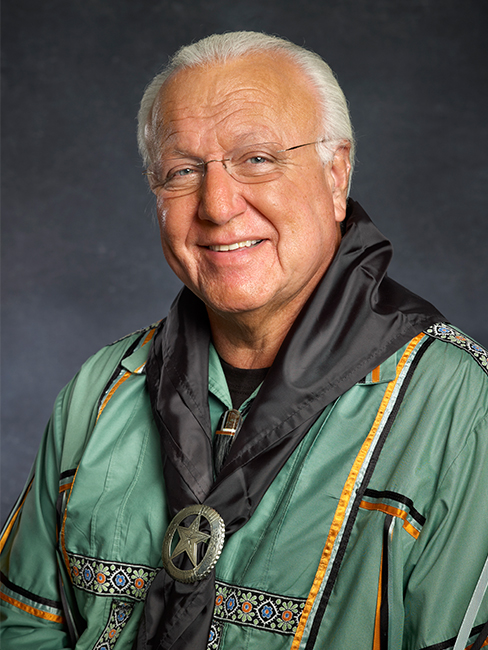
Bozho nikan, (Hello, my friend,)
With December, we will soon close out the year and prepare to start a new one. It is a good opportunity to look back on the Tribe’s many accomplishments these past 12 months and to see all the ways we have grown.
CPN’s industries are healthy and strong, with an impressive amount of growth this year. Along with opening Iron Horse Industrial Park, CPN has also opened its first business within the park. Sovereign Pipe Technologies manufactures high density polyethylene (HDPE) pipe that can be used in a variety of industries, from oil and gas to geothermal and telecommunications. We also received a new switch engine locomotive in February, which will bring more opportunities for economic growth and expansion at the park as we develop the CPN Railroad, a Class III rail line.
The Tribe’s bank, formerly called First National Bank, rebranded to Sovereign Bank this year, and the Tribe purchased an 18-story building in Oklahoma City that houses our metro Oklahoma City branch. The Sovereign Bank also purchased the former Bank of America bank building in Edmond, Oklahoma, for a branch operation.
Construction is underway for several projects around the Nation.
We broke ground on the new FireLake Hotel and Casino. This will replace the current casino, located next to FireLake Discount Foods, which was built in the 1980s. The new building will cover 49,000 square feet and hold more than 600 slot machines, in addition to a small kitchen and bar. The adjacent three-story hotel will include 126 rooms, offering nearby accommodations for visitors coming to festivals, concerts, sporting events and even the Family Reunion Festival.
Improvements to the FireLake Ball Fields have included the transition from dirt to artificial turf, and with another quad and a championship field planned, the goal is to become a World Series destination for NCAA Division II and lower softball teams. We already hosted the first two rounds of the state tournament for all seven Oklahoma fast pitch classes this fall, drawing thousands of fans to the area.
Services for Tribal members have also improved this year. A new Behavioral Health building next to our Mission Hill Hospital is completed and is being furnished now. The new space will offer expanded staff and services. Tribal housing is expanding as well, with several additional family housing units planned for completion in Tecumseh, Oklahoma. In addition, we have added two new childcare facilities, and plans are also in motion to build another grocery store in Asher, Oklahoma.
With the receipt of a grant, CPN’s Language Department was also able to host its first immersion program. The grant funded three students to attend a summer master apprentice project where they could study the Potawatomi language for eight weeks.
The Tribe also saw some notable athletic performances. Tribal member Creed Humphrey, a center for the Kansas City Chiefs, received his first Super Bowl ring, and the Potawatomi Fire, the only tribally-owned professional basketball team in the United States, earned the title of national champions for The Basketball League in only its second season.
As we get ready to celebrate the birth of Christ with family dinners and get togethers, take time to be gentle with yourself amid all the stress that comes with planning big gatherings. In following Tribal tradition, remember to include others in the preparations so that everyone can contribute. Honor our elders and allow them to get food and drinks first at meals. Learn your family stories!
With the year coming to a close and a new one ahead, take peace of mind from knowing that your Tribal government and Nation are thriving. We will continue to grow our enterprises and services so that we can better support our communities and Tribal members. Thank you for the honor of serving as your Tribal Chairman.
Megwetch (Thank you),
John “Rocky” Barrett | Geweoge (He Leads Them Home) | Tribal Chairman
Linda Capps
Vice-Chairman
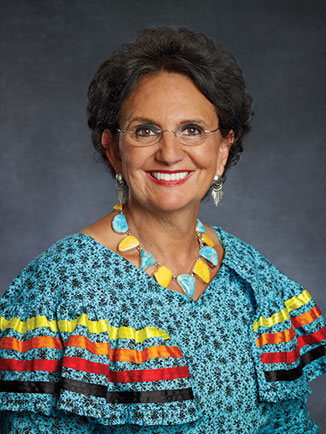
Bozho (Hello),
It is my sincere wish that everyone had a happy Thanksgiving. It is a great time for seeing family and reflecting on all our reasons to be grateful, but also a season of giving. During the holiday season, I am proud to serve for the Citizen Potawatomi Nation, which partners with many nonprofit entities in Shawnee, Tecumseh and the surrounding areas.
One of the deserving organizations the Tribe partners with is the Salvation Army. The Salvation Army offers transformative programs to improve the lives of those who find themselves in dire need of food and overnight shelter.
CPN donates and assists with several Salvation Army and Boys & Girls Club events in Shawnee and Tecumseh, from Spaghetti Day to the BGC Golf Tournament Fundraiser. FireLake Discount Foods rotates months of serving in the soup kitchen, with staff preparing and providing food to serve about 100 people once a month after working hours. Justin Neely with the Language Department also teaches Potawatomi language and songs to the Salvation Army Afterschool Program, and the Potawatomi Fire basketball team provides camps and rally events for students.
In addition to working with nonprofits throughout Pottawatomie County, CPN also reaches out to each school district in some way. Each school district in the county has Potawatomi children among its students, which makes every school important to the Tribe. One example of how CPN benefits schools is our vehicle tag operation. Profits from the CPN Tag Agency are sent to schools around the state. The majority of those funds have benefited Pottawatomie County schools, because that is where most of our Tribal members live. Since 2005, CPN has donated more than $3.9 million to Oklahoma school districts.
Recently, the Tribe also sponsored a First Responder of the Year award, which was presented to Lt. Dakota Snow with the Tecumseh Police Department. He responded to an emergency call involving a child who was injured by a lawnmower. Due to the quick actions of Lt. Snow and others who arrived on scene, the child had a positive outcome, and today, not only can she walk, but she’s even a cheerleader. To honor his service, Lt. Snow was presented with a plaque, $500 and a $100 gift card to buy lunch for his shift.
Our employees also offer many acts of kindness during the holidays. They work hard during Thanksgiving and Christmas to participate in “angel trees” for various organizations. They donated items and participated in a holiday craft silent auction to raise funds for others in need. They give money to supplement various programs for children and needy adults. They donated food for holiday baskets for both Thanksgiving and Christmas, and they volunteered to help distribute the baskets as well. For Thanksgiving, CPN employees donated more than 600 pounds of food for up to 300 baskets for families. Another 350 families will receive baskets for Christmas. Employees give their time to help boundless programs at CPN and in the community.
All these things are just a part of what our Tribe does for the community.
Happy holidays to each member of the CPN family. I hope this time of year brings you many blessings and some precious time with those you love.
Thank you for allowing me to be your Vice-Chairman throughout the years.
Migwetch (Thank you),
Linda Capps | Segenakwe (Black Bird Woman) | Vice-Chairman | Work: 405-275-3121 | Cell: 405-650-1238 | lcapps@potawatomi.org
Alan Melot
District 1
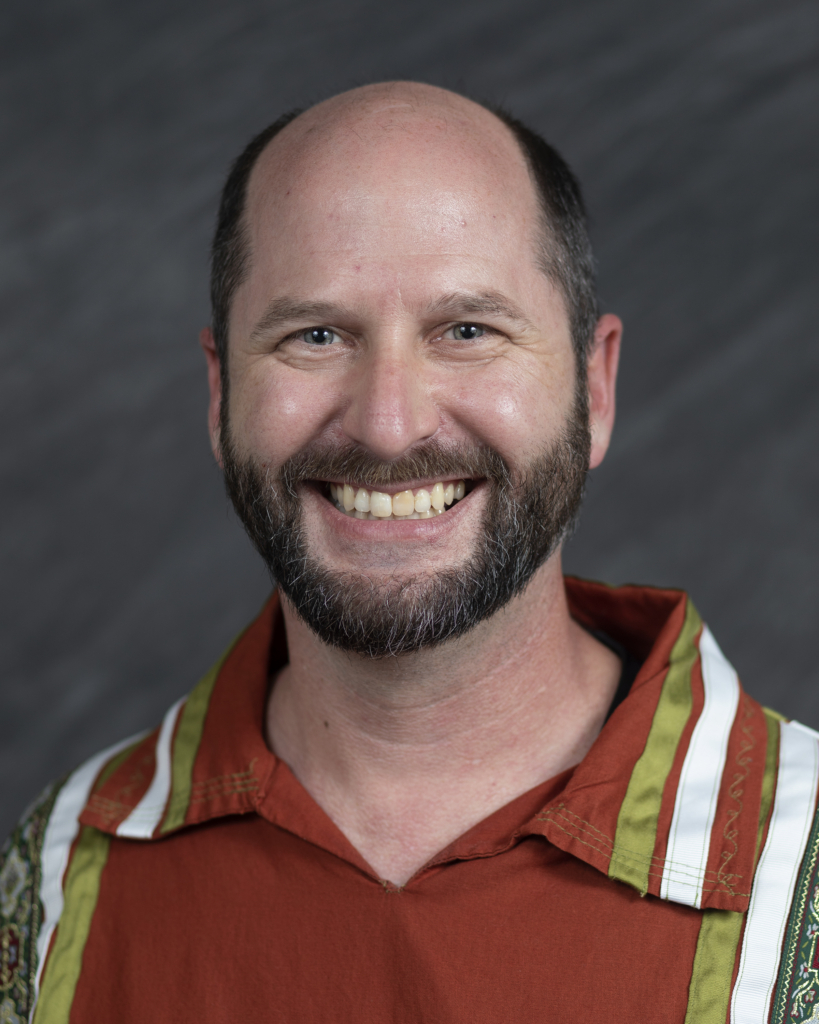
Bozho jayek (Hello everyone)!
I’m writing this month to encourage you as you move into the new year — I promise this is intended to be uplifting.
Life requires only a few things from us we cannot avoid. My religious background and tradition introduced me to some of these basics, and as far as I can tell, they are universal. Two basics that I want to encourage you in are working and suffering. I remember laughing with my sister at a hymn we sang in church that had the line “Work and suffer, brother!” We would tell each other that whenever we faced some unpleasant task, laughing at the idea working and suffering might bring joy. I guess I’ve matured a bit since then, because although I still think the line is funny, I understand it now.
We all suffer. Suffering is the universal experience of humanity. Suffering defines humanity, but it doesn’t define us as individuals. As individuals, we are defined by how we respond to that suffering. All effective responses to suffering involve work.
So, work! Work won’t end your suffering, but odds are it will bring meaning to it. I’ve talked to many of you who want to learn our language and our culture, and I would strongly encourage you to do so. It takes work! You can’t just order a book and magically learn our language; you have to put in the time and effort. You must sacrifice something to learn our language. You must harness your mind and allow yourself to make mistakes and be imperfect. You can’t join a Facebook group, watch a YouTube video or read a Hownikan article and learn our culture. You must spend time and effort to create personal relationships. Your heart and motivations have to be in the right place so you can be taught. It’s work to learn the language and our culture.
It takes work to learn what belongs to the Potawatomi instead of just learning what belongs to Indians. For example, anyone who has watched Dances With Wolves can remember that tatonka means buffalo, but it takes work to learn that the Potawatomi for buffalo is bgoch bsheke and is a reference to running fast and being wild. It’s okay to know tatonka but better to know bgoch bsheke, and you can’t learn the difference from a Kevin Costner movie.
It takes work to learn that “Alan ndezhnekas” doesn’t mean “My name is Alan” but “I am called Alan.” English is constructed around things, and Potawatomi is constructed around doing, as evidenced by Alan being my name (a thing I possess) or Alan being how I am called (an act, a way of doing). Fundamentally, Potawatomi are about doing rather than about having.
Embrace work and live with vitality. You suffer no matter what, so make it meaningful and full of purpose! Don’t lose heart while you work towards the good, because in time you will be rewarded if you don’t give up.
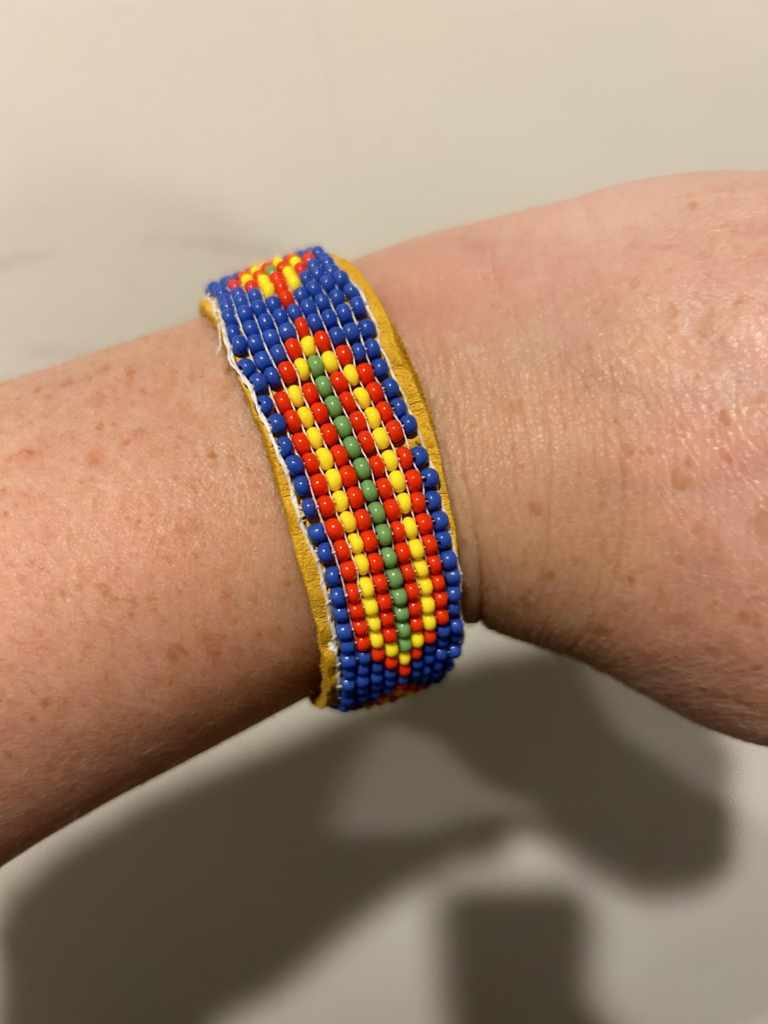
If you want a language storybook, get in touch. I may have some Potawatomi cookbooks from Jody Mattena soon, so reach out if you would like to get one of those!
It’s a privilege to serve the District. It has been a good year. I’m thankful for the goodness of God in my life and ask that you keep me in your prayers in the New Year. I will certainly keep you in my prayers as well. I wish you all the warmest holiday greetings. Merry Christmas and Happy New Year to all!
Alan Melot | Legislator, District 1 | alan.melot@potawatomi.org | 608 S. Sergeant | Joplin, MO 64801 | 417-312-3307
Eva Marie Carney
District 2
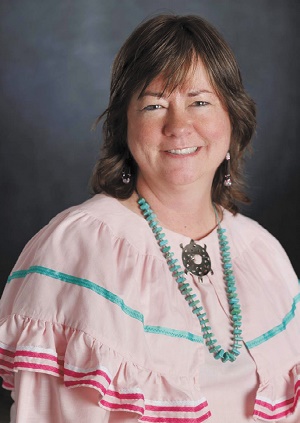
Bozho, nikanek (Hello, friends),
Gilcrease Museum’s Digitized Indigenous Paintings
Visiting Gilcrease Museum in Tulsa is on my bucket list. You may know
that the museum is temporarily closed for construction. You also may know that the museum’s founder, Thomas Gilcrease, was Muscogee — he was an avid collector of ethnological objects from Indigenous communities throughout the Americas and invested in the work of living Indigenous artists in the first half of the twentieth century. Gilcrease Museum now holds more than 2,500 Indigenous-made works.
I recently learned about significant, oral history-based research (cpn.news/gilcreaseoralhistory) into Gilcrease’s holdings by Jordan Poorman Cocker (Henry Luce Foundation Curatorial Scholar of Indigenous Art 2022). Poorman Cocker relates that her research “began with a deep-dive investigation into the records of over two hundred and fifty Indigenous artists who represented vast regions of the North American continent. Biographical research further revealed that over 50 percent of these artists descended from the more than thirty-nine federally recognized Indigenous nations now connected to the fluid boundaries of the region known as Indian Territory, or present-day Oklahoma.” She obtained extensive input from the artists and their descendants or tribes, and among the artists she researched are CPN’s own Minisa Crumbo and Woodrow Wilson “Woody” Crumbo. Per Chelsea M. Herr, Ph.D., Jack and Maxine Zarrow Curator for Indigenous Art and Culture, “This project serves as a catalyst for more ethical, appropriate, and inclusive research and representation” in Gilcrease and other museums. During Gilcrease’s temporary closure, digitized works by 47 of the artists selected for the project can be found on Gilcrease’s website (cpn.news/digitizedworks), along with biographies written for 10 of the artists (cpn.news/artistbiographies), drawing upon Poorman Cocker’s research. You can find Minisa’s drawing, The Pueblo Dress (charcoal, pastel, and watercolor on paper), among the art presented online (cpn.news/pueblodress). While on the website, use the search tag “Potawatomi Indians” to find 46 holdings by artists Louis Shipshee, Woodrow Wilson “Woody” Crumbo, Marcell J. Darling and others.
National Gallery of Art (Washington, D.C.) Contemporary Art by Native Americans Exhibition
Until Jan. 15, 2024, the National Gallery of Art is exhibiting “many of today’s most boldly
innovative Native American artists,” according to Native News Online. The exhibit is titled “The Land Carries Our Ancestors: Contemporary Art by Native Americans.”
Let’s plan to start the new year off in a good way by meeting up on Friday, Jan. 5, 2024, outside the exhibition (East Gallery, Upper Level, West Bridge) at 1 p.m. to see the art, and then visit together at one of the gallery cafes. (I’ll buy the snacks and drinks.) You can find directions on the National Gallery’s website. Admission is free; no tickets are required. I look forward to seeing some of you there!
Educators, don’t miss the National Gallery’s K-12 resources related to this exhibition!
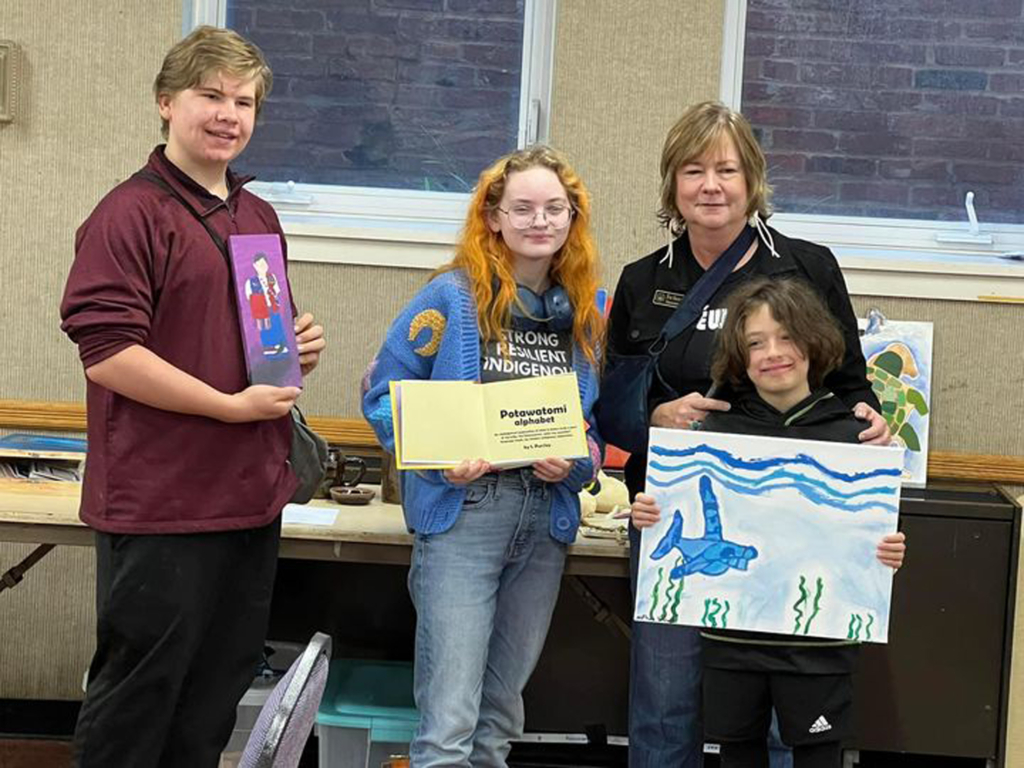
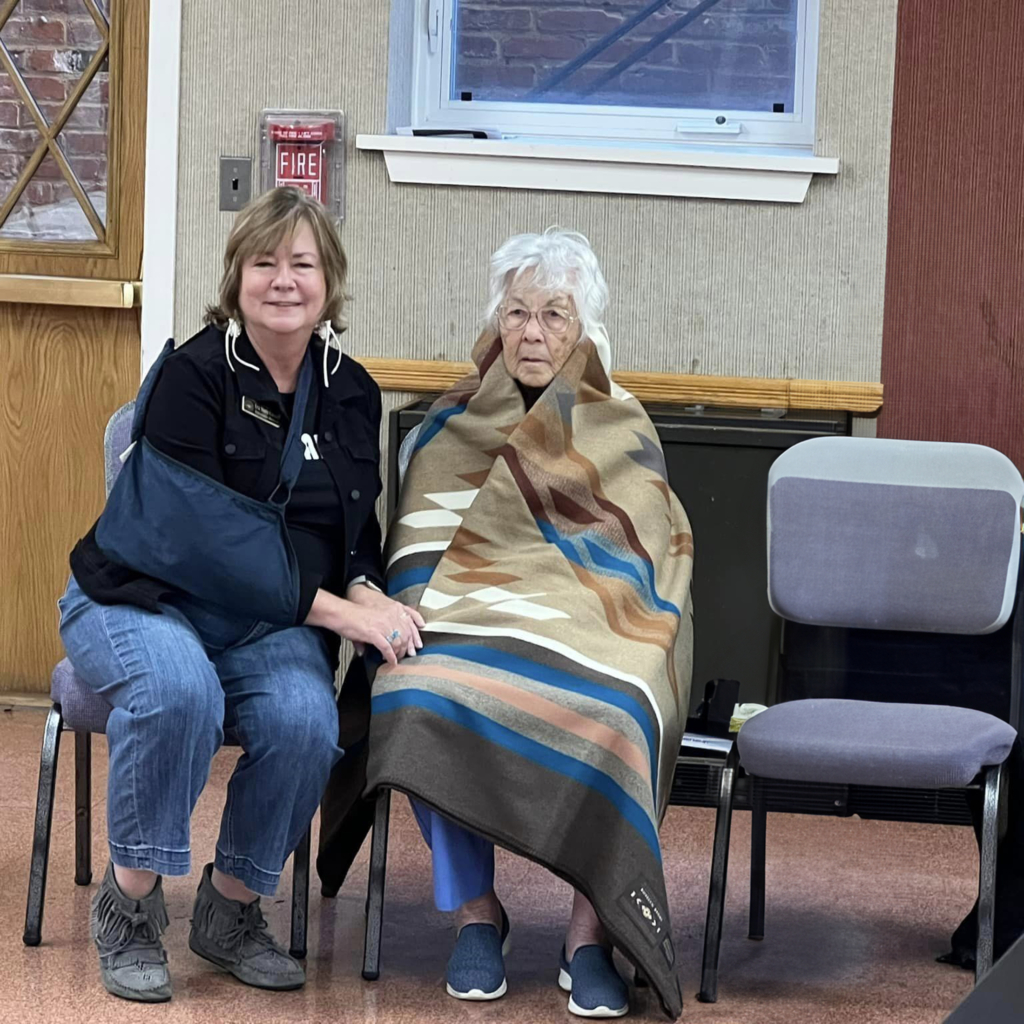
Birthday/wedding/other milestone celebrations?
In my January 2024 column, I’ll give a report on our Nov. 11 Fall Feast. If you have milestone events featuring folks in our District 2 community that you’d like noted in a future column, please let me know. I’d like to share and celebrate them. Kind regards and bama mine (later again),
Eva Marie Carney | Ojindiskwe (Bluebird woman) | ecarney@potawatomi.org | evamariecarney.com | evamariecarney@gmail.com | 5877 Washington
Blvd. PO Box 5591 | Arlington, VA 22205 | Toll Free: 866-961-6988
Bob Whistler
District 3
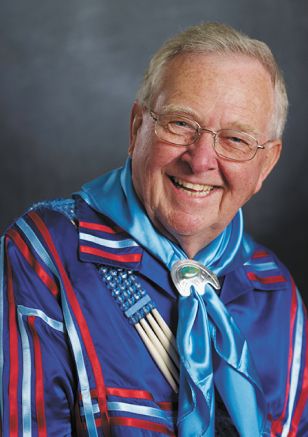
Bozho ginwa (Hello everyone),
September was a very interesting month with several activities that I participated in, one of which was:
PTOD (9/18 – 9/23)
We began the Potawatomi Trail of Death caravan at the Fulton County Historical Society Museum in Rochester, Indiana, on Monday, Sept. 18. They have copies of the 2003 book Potawatomi Trail of Death. I purchased a copy for my library. From there we proceeded to the Chief Menominee Statue in Twin Lakes, Indiana, where introductory comments were made by special guest George Schricker. A group photo was taken and we then set off to over 70 locations where our ancestors camped on that 660-mile forced death walk between Sept. 4 and Nov. 5, 1883.
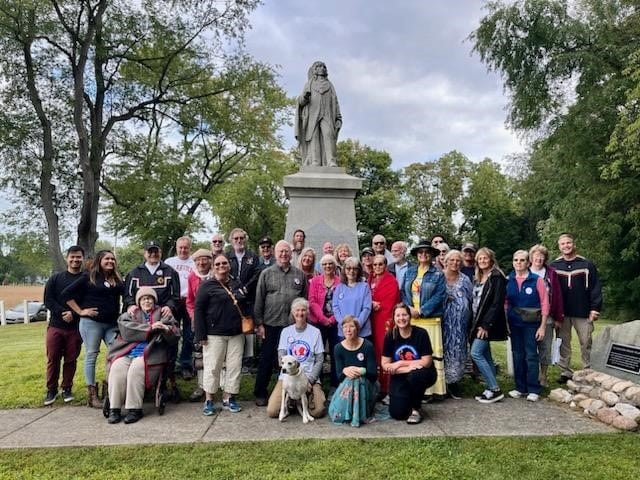
A number of nature’s messages to us occurred just prior to the trip and during our memorial journey. Two days before the start, a member of our caravan was at the site of the Menominee Statue and took a picture of an eagle resting on the head of the statue. At one stop we encountered monarch butterflies basically greeting us. At another there were literally hundreds of dragonflies and our group leader George Godfrey advised us that they were there eating the mosquitoes that were concentrated in the area.
At almost every stop there was a memorial marker with a brief description of the Trail of Death. A number of these markers were created and placed there by a Boy Scout as part of his work towards getting their seventh and highest rank, Eagle Scout.
The markers ranged from just a few sentences to a fairly long statement. The one at Sangamon Crossing read: “24-26 September, 1838. Forcibly removed from northern Indiana to eastern Kansas, over 800 Potawatomi encamped here, cared for sick, and were allowed to hunt; 2 children and 1 woman died: 39 deaths occurred along the entire route.” This bronze plaque was sponsored by: Hanson Engineers, Springfield Meyer Material, McHenry.
On the trip we were hosted by locals for lunch, snacks and supper. The hospitality provided by local citizens along with visibly demonstrated reverence of our journey was constant. Each of our vehicles had a white flag with dark blue and red imprint commemorating our trip. As we drove along many roads, the cars coming towards us stopped and waited until our 14-vehicle caravan had passed. I was in the tail vehicle and waved to signal that our group was complete. When our trip began, I was asked to be the last vehicle and was to confirm to the lead vehicle that our group was intact. The term I was instructed to use was: “Quack, quack, all ducks in a row.”
Due to article space limits, I will simply move on to our next to last stop where we were in Kansas. My next article will give a few more details on this trip.
Prior to our drive on to Sugar Creek, Kansas, we stopped for a late breakfast at Heritage Park in Olathe, Kansas. We were greeted by over 200 in attendance recognizing our trip. A recognition certificate of our trip was given to us by the Honorable U.S. Congresswoman Sharice Davids. Legislators Alan Melot (District 1), Jon Boursaw (District 4) and myself accepted the certificate. A photo of that presentation is included with this article.

I felt, as a legislator, I needed to make this trip and provide some feedback on the journey. It is held every five years. If your future schedule permits, it is a trip through some history of our ancestors that is very enlightening, and I urge you to join a future caravan.
Migwetch for the honor of serving as the elected representative for district three.
Nagech (Later),
Bob Whistler | Bmashi (He Soars) | rwhistler@potawatomi.org | cpn3legislator@yahoo.com | 1516 Wimberly Ct. | Bedford, TX 76021 | 817-229-6271 | cpndistrict3.com
Jon Boursaw
District 4
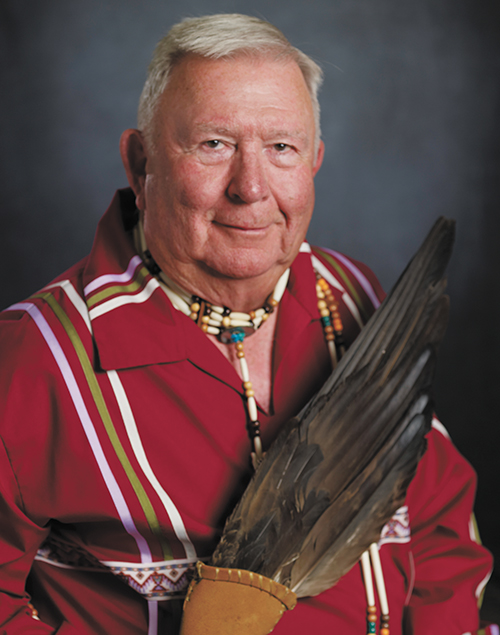
Bozho (Hello),
Holiday greetings
Peggy and I would like to sincerely wish you and your family a very Merry Christmas and a Happy New Year. I look forward to 2024 with great expectations and enthusiasm as I continue to serve Tribal members across the state and foster the history and presence of the Citizen Potawatomi Nation in Kansas.
District 4 meetings in Rossville and Wichita in October
The 90 attendees at the Rossville meeting participated in a Zoom presentation led by Blair Schnieder, Ph.D., from the Kansas Geological Survey (KGS) regarding her involvement in the Uniontown Cemetery project. She has conducted and analyzed the numerous surveys done in the cemetery. A DVD presentation by Ronnie Wear, General Manager & CEO of Sovereign Pipe Technologies, on the operation of the plant was also on the agenda. He had also sent me a short length of the pipe produced by the plant and a sample of the ingredients used to manufacture the pipe, which was passed through the attendees so they could have an appreciation of what is produced by the plant in Shawnee, Oklahoma. At the Wichita meeting, the 50 attendees were treated to an extremely interesting presentation by Bryan Cain, President and CEO of Sovereign Bank of Oklahoma, on the current size and financial value of the bank. There was an excellent interchange between Bryan and the attendees during a lengthy Q&A session. The Sovereign Pipe DVD and pipe samples were also available at this meeting.
Three Tribal History Presentations in October
The first was in the Topeka Public Library. Prior to the presentation, I was informed that 20 were expected to attend. Later I noticed the number of attendees exceeded 20 and the majority were young individuals. I asked the woman who had invited me what was the total number and why so many young people. She replied there were 42 attendees, and the young people were from Washburn University. She went on to say that a WU English professor had given an assignment to write a paper on a subject that the student knew nothing about and then handed out a list of suggested topics and my presentation was on the list. Needless to say, the Q&A session following my presentation was very active.
The next presentation, again at the Topeka Library, was to the Topeka Genealogical Society. Again, I had a very active Q&A session, particularly pertaining to the period of time the tribe was in Kansas. Later I received an email from the woman who had invited me to speak saying, “Thank you so much for your fantastic program to the Topeka Genealogical Society on Thursday…. I think you win the prize for the longest question and answer session we have ever had after a meeting!”
Dr. Schnieder invited me to give my presentation to a group of her associates with KGS and Kansas University. I was amazed at the emotional reaction my presentation had on the group, with several expressing that they were not aware of the severe hardships endured by the Native American tribes displaced by the forced removals.
Rebuilding of the Rock Walls at Uniontown has been completed.
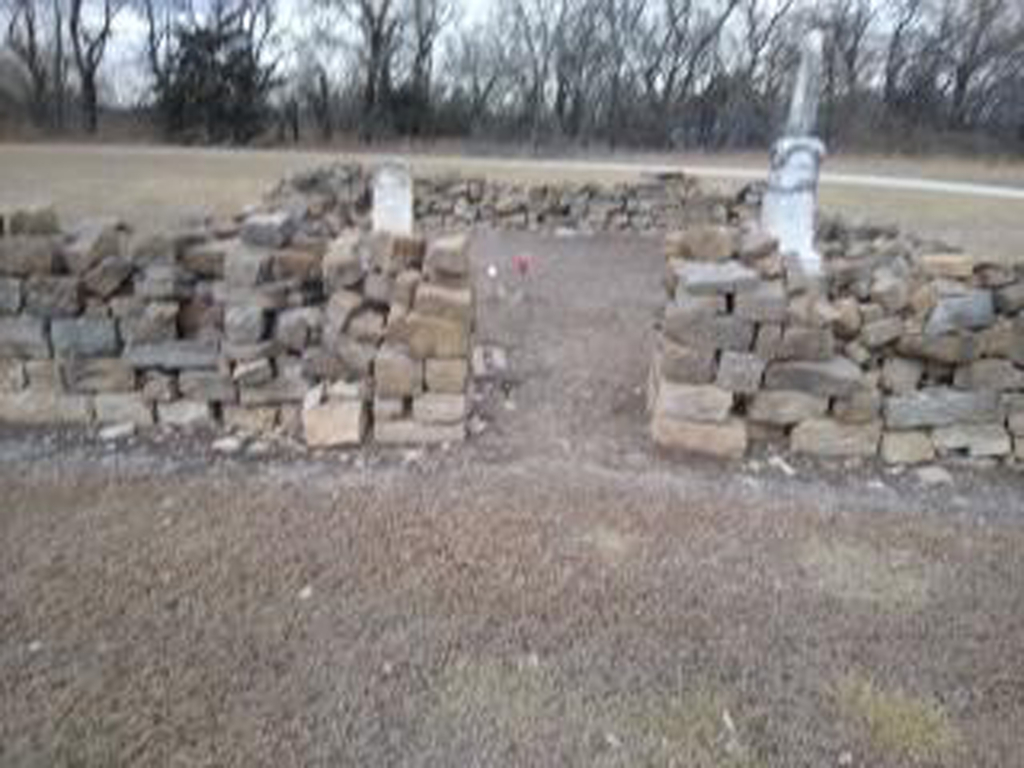
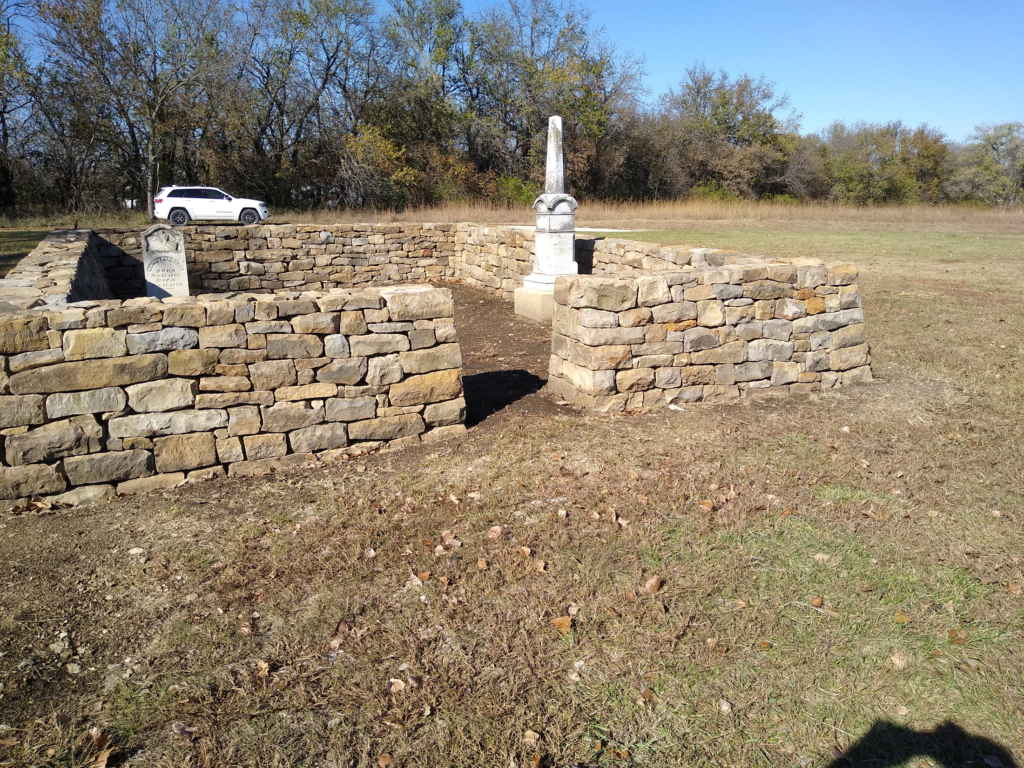
Upcoming CPN Elders’ Potlucks
Dates for the next two Elder potlucks held in Rossville at noon are:
December 8 | Traditional Holiday Feast (Ham, mashed potatoes and corn) | RSVP by the 5th
January 12 | Variety of Soups | RSVP by the 9th
Bring your favorite side dish or dessert. Please RSVP to Tracy at 785-584-6171.
Come join us and bring your favorite side dish or dessert. Please RSVP to Tracy at 785-584-6171.
Megwetch (Thank you),
Jon Boursaw | Wetase Mkoh (Brave Bear) | jon.boursaw@potawatomi.org | 2007 SW Gage Blvd. | Topeka, KS 66604 | 785-608-1982 | Office Hours: Tuesday 9-11 a.m. | Thursdays 3-5 p.m. | Other times as requested
Gene Lambert
District 5
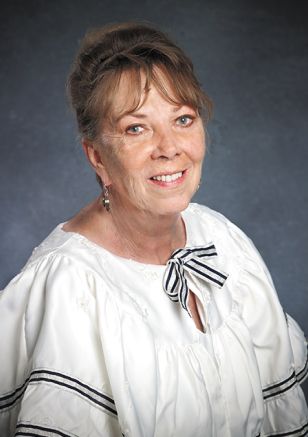
Bozho (Greetings),
We have finally completed our District 5 meetings for the year 2023 and are saying goodbye to another year.
It has been exciting seeing all of you again.
The meetings weren’t perfect, but you were there supporting our Nation. That’s what it is all about.
We have had personal visits, namings and meetings in Chandler, Arizona; Denver, Colorado; and Albuquerque, New Mexico. If you didn’t make it this year, there is 2024 coming up and we invite you to join us.
This year, as always, we acknowledged our youngest Potawatomi member, as they are our future. Youngest member was Corrie Graber, who attended with her mother, Stacie Graber.
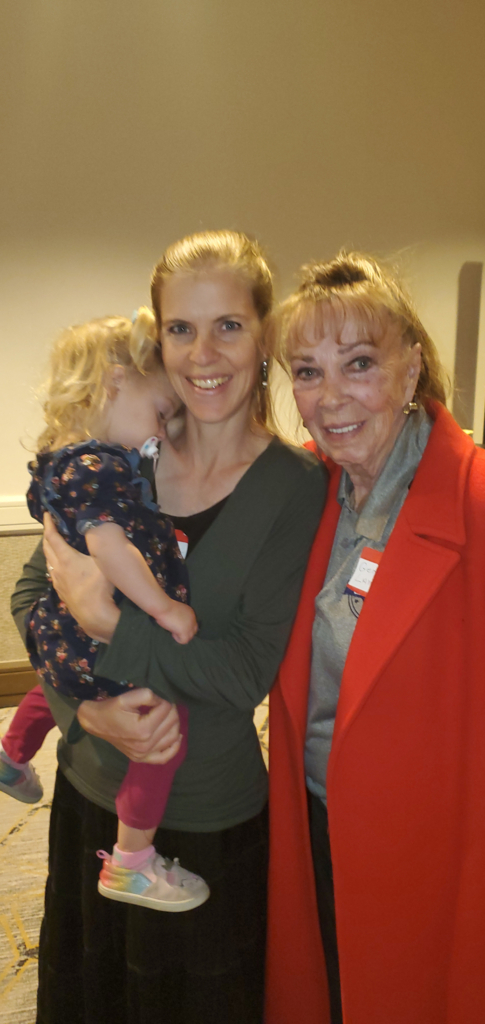
Next, the acknowledgement goes to our wisest member, as they are the rock of which the young will grow. Wisest member was Marlene Perez.
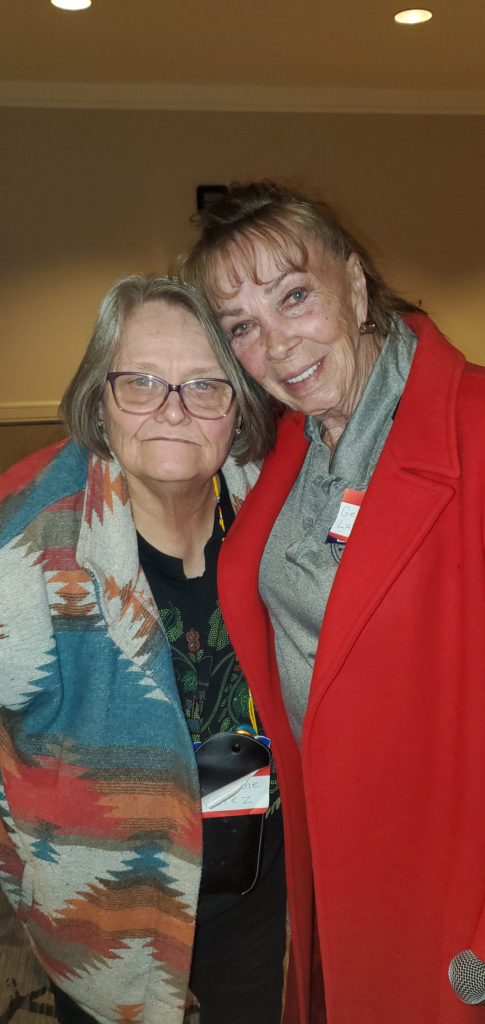
The distance is acknowledged for efforts over, above and beyond to attend the meeting. Farthest traveled was Robert Melot from Palisade, Colorado.
District meetings are where you gain information about new programs, exciting upcoming events, and benefits for CPN members, not to mention having the opportunity to meet family members you didn’t even know you had.
Going into December brings about all the family days remembering the past and looking forward to the memories you are making today.
Never think “Well, there is always next Christmas,” because it might not be the case for some. Let those you love know by telling them.
Let’s also not forget why we celebrate Christmas. It is more than gifts and family gatherings. Remember the star that led the wise men to the manger where Jesus was born. The gifts we share with each other today are reminiscent of the gifts brought
by the wise men to the new born king of kings.
What a gift from our Creator.
I want to wish you all the happiest of holidays. Stay healthy and safe, because we love
you and want to see you next year.
Love you all,
Gene Lambert (Eunice Imogene Lambert) | Butterfly Woman | glambert@potawatomi.org | 270 E Hunt Highway Ste 229 | San Tan Valley, AZ 85143
Cell: 480-228-6569 | Office: 480-668-0509
Dave Carney
District 8
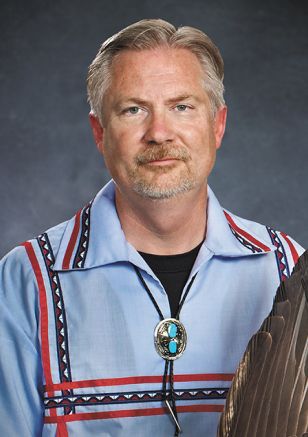
Bozho ndenwenmagenek (Hello, relatives)!
District 8’s annual Fall Feast was held in Seattle on Saturday, Oct. 14, at the Duwamish Longhouse. We had approximately 70 members from around the district come and enjoy presentations, food, prizes, crafts and camaraderie.
At the beginning of the get-together, loaner hand drums were passed out to each table and the words to The Morning Song were both handed out and projected on the screen for all to participate. Julie Jackson and Robert White of Coleville, Washington, and John Kochanowski of Portland, Oregon, led the singing, and the overall musical effect was very good — and a great way to start our fall celebration.
Presentations included an overview of the Nation’s history, the current form of government, enterprises and benefits. Another presentation highlighted the progress of the Nation’s new columbarium (niche wall). The news of this newly completed project was very well received.
Selah Bellscheidt of Vashon, Washington, did a wonderful job presenting information about the Potawatomi Leadership Program and her experience in it a few years back. She encouraged those present to support loved ones in that age group to apply next year. Migwetch (Thank you), Selah!
The meal shared was roasted turkey, potatoes and salad. There was also an amazing array of desserts brought by our citizens!
We recognized our “Wisest Potawatomi,” 82-year-old Mary Ewing from Camano Island, Washington, (Stackhouse Family) by awarding her a beautiful Pendleton blanket. Four-year-old Penelope Gatsby from Lacey, Washington, was our youngest enrolled member, and she received a child’s Pendleton blanket. Whitefish, Montana, resident Frank Anderson and his daughter flew in to join us and received a traveling bag for his efforts. All prizes were purchased from the gift shop in the Nation’s Cultural Heritage Center.
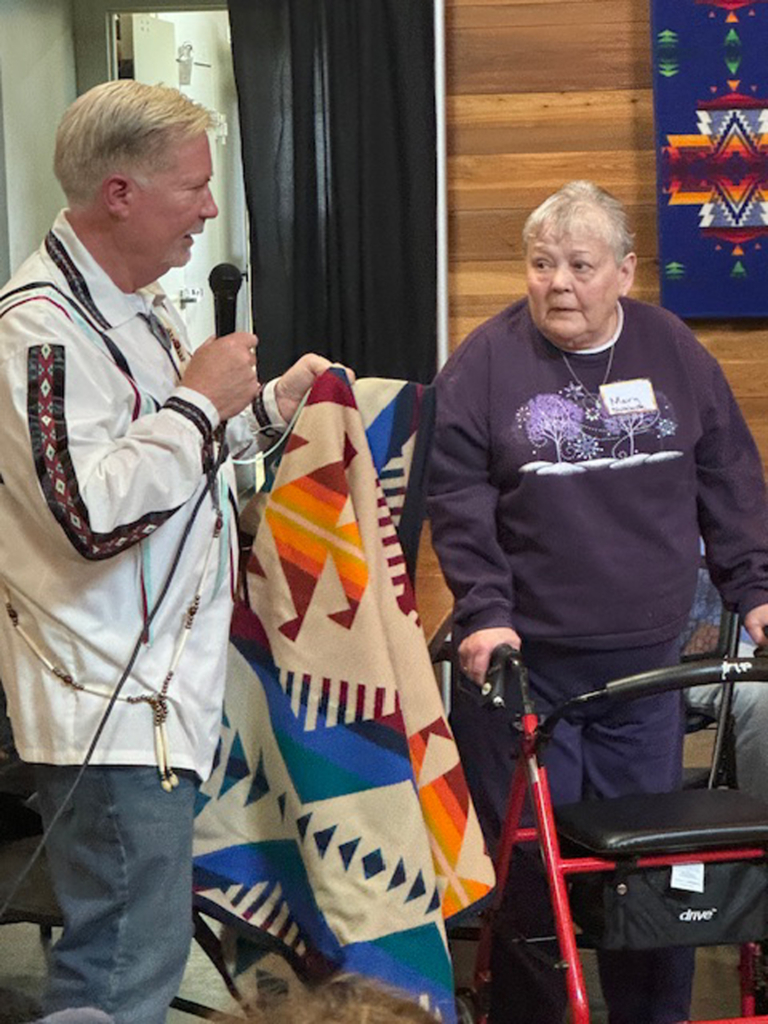
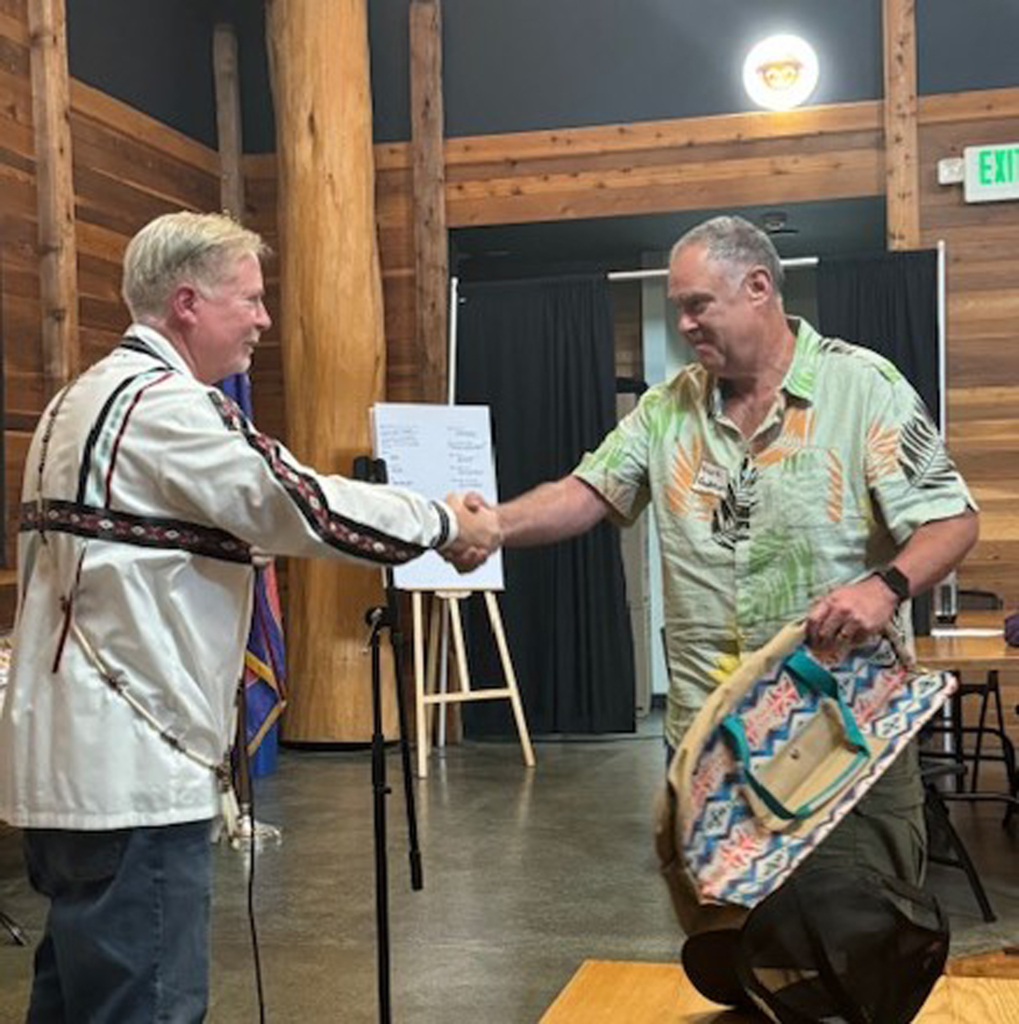
District 8 gatherings usually include an art contest for members to highlight their talents. At this event, we had some excellent artists. The winner of the fine arts category was Jan Lamascus of Banks, Oregon, for her bronze statue titled, The Archer. Carol Yancy took the prize in the craft category for her greeting card featuring the Citizen Potawatomi seal. The youth category winner was Elijah O’Neil of Southbend, Washington, for an original pencil drawing called Bag Boy. All winners received gift cards from Hobby Lobby.
Our meeting concluded with a non-sewing sewing project. Folks used stencils on fabric to create woodland designs and then adhered the patterns to canvas tote bags. This seemed to be a successful project, with our citizens being able to show their Potawatomi pride the next time they visit the grocery store. This idea was given to me by Leslie Deer of the Cultural Heritage Center.
As with every event, many hands make like work. I am thankful to volunteers like Rick and Nancy Eilers, Thomas and Sue Taylor-Jones, Rocky Cheraux, Jenna Ruggenberg and my wife Nicole Carney.
Looking forward to next year and meeting more Potawatomi family!
Whatever your faith tradition, I wish you a very fine holiday and as always, it is my honor to serve as your Legislator,
Dave Carney | Kagashgi (Raven) | dcarney@potawatomi.org |
520 Lilly Road, Building 1 | Olympia, WA 98506 | 360-259-4027
Paul Wesselhöft
District 9
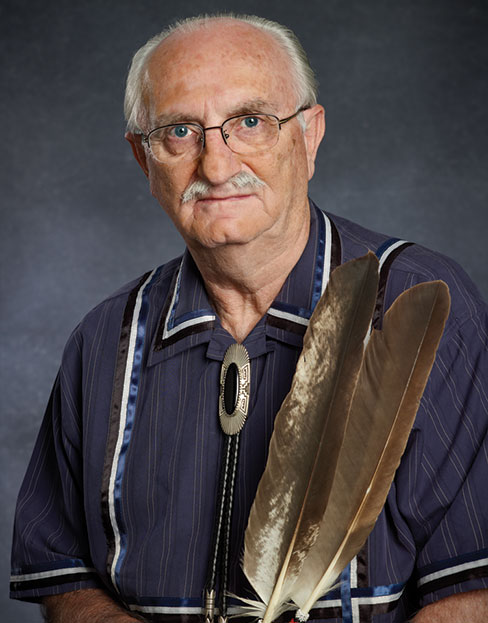
Bozho, nikan (Hello, friend),
CPN is not a reservation tribe
An Indian reservation is an area of land held and governed by the U.S. Federal Government. Native tribes are semi-sovereign, subject to the regulations passed by the U.S. Congress and administrated by the U.S. Bureau of Indian Affairs, and not the state government in which they are located.
There are approximately 326 Indian land areas in the U.S. administered as federal Indian reservations. The Navajo Nation is the largest with 27,000 square miles.
Vice-chairwoman Linda Capps has said that the BIA refers to our Potawatomi area as a
former reservation, but a lot of time has passed since we mainly lived in the Asher area.
She writes, “The Indian Appropriations Act of 1851 authorized the creation of Indian areas in what is now Oklahoma. Native peoples were once more forced to move to smaller portions of that land called reservations. I like to think of our ‘former reservations’ as ‘jurisdictional area’ because within that area, we have certain rights. The main one, of course, is placing land into trust.”
Possible paradigm shift
In July 2020, the U.S. Supreme Court ruled that nearly 4,700 square miles, or roughly half of Oklahoma, is Native American reservation land. The high-profile decision settled questions of whether the reservation still remained in existence after Oklahoma officially became a state. Despite having such a large proportion of Indian Country within its state boundaries, Oklahoma’s population is just 8 percent, or about 316,929, Native American.
It’s yet to be seen what or how such a Supreme Court decision will affect the state of Oklahoma! Theoretically, Oklahoma could be divided into two separate states! However, I don’t think that will happen. What do you think?
Migwetch (Thank you),
Paul Wesselhöft | Naganit (Leader) | reppaul@gmail.com | pwesselhoft@potawatomi.org
